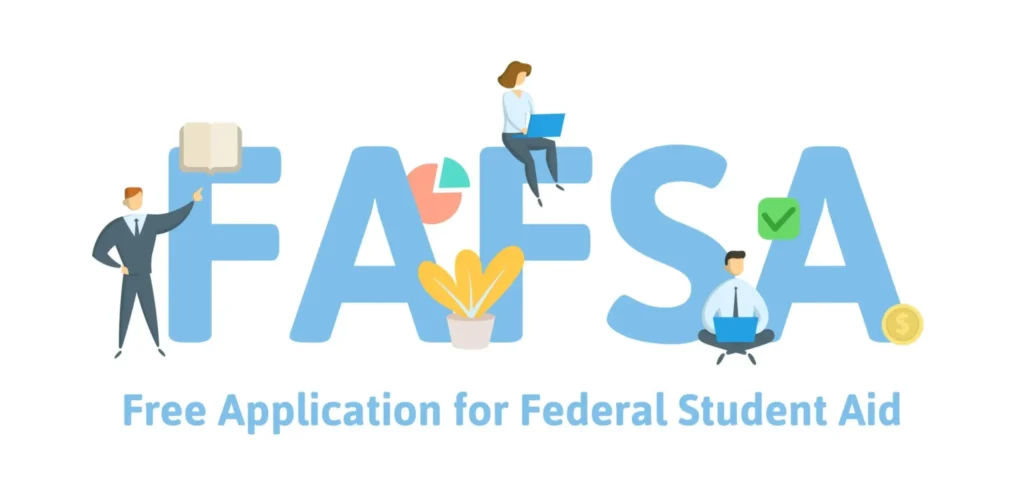Applying for financial aid can feel like walking through a maze. The FAFSA (Free Application for Federal Student Aid) is your ticket to accessing financial aid, but making mistakes during the application process can cost you thousands of dollars—or even your chance to receive aid at all.
The good news? You can avoid these common pitfalls with the right tips. Let’s dive in and ensure your FAFSA application is error-free!
Mistake 1. Procrastinating the Application
The early bird gets the worm—and more financial aid. FAFSA applications open every October, and funds are distributed on a first-come, first-served basis. Waiting until the last minute can leave you with limited options, including relying more on private loans for college.
How to Avoid It:
Mark your calendar and aim to complete your FAFSA application as soon as it opens. Even if you’re unsure about your college choice, submit the application early to secure your spot in the financial aid queue.

2. Using Incorrect Personal Information
Something as simple as a typo in your Social Security number, name, or date of birth can derail your application. These errors might prevent your FAFSA from being processed.
How to Avoid It:
Double-check every field before submitting. Ensure that the information matches your official documents like your Social Security card or driver’s license.
3. Skipping the Required Signatures
Did you know your FAFSA won’t be processed without signatures? This mistake often happens when parents or students forget to create an FSA ID or leave the signature section blank.
How to Avoid It:
Both the student and one parent (if applicable) need an FSA ID to electronically sign the form. Create these IDs well before starting the application.
4. Ignoring State and School Deadlines
FAFSA has a federal deadline, but states and schools often have earlier cutoff dates for aid distribution. Missing these deadlines could reduce your eligibility for grants or work-study programs.
How to Avoid It:
Research the deadlines for your state and top-choice schools. Set reminders to stay on track and ensure you meet all application timelines.
5. Underestimating Family Income Information
Many students or parents mistakenly think they won’t qualify for financial aid due to their income level. This assumption can lead to skipping the FAFSA entirely.
How to Avoid It:
FAFSA considers more than just income, such as household size and the number of family members in college. Always apply—you might qualify for more than you expect.
6. Failing to Report All Required Information
FAFSA requires detailed financial information, including tax returns, untaxed income, and assets. Forgetting to report any of these could delay or reduce your financial aid package.
How to Avoid It:
Use the IRS Data Retrieval Tool (DRT) to import your tax information directly into your FAFSA application. It’s accurate and saves time.
7. Only Listing One College
If you’re still deciding between schools, listing just one college on your FAFSA limits your chances of receiving aid from other institutions.
How to Avoid It:
You can list up to 10 schools on your FAFSA. Add all potential choices to keep your options open.
8. Not Considering Private Loans for College
While FAFSA helps with federal aid, it may not cover all your college expenses. Ignoring private loans for college can leave you scrambling for funds later.
How to Avoid It:
After maximizing your federal aid, explore private student loans as a backup. Compare interest rates, repayment options, and benefits to find the best fit.
9. Forgetting to Renew FAFSA Each Year
FAFSA isn’t a one-and-done deal. You need to reapply every year you’re in college to remain eligible for financial aid.
How to Avoid It:
Set a recurring annual reminder to renew your FAFSA. Update your financial information as needed and recheck deadlines.
10. Overlooking Financial Aid Resources
Many students don’t take advantage of resources like financial aid offices, FAFSA help centers, or online guides. This can lead to confusion and missed opportunities.
How to Avoid It:
Seek help when you’re unsure. Many schools have free financial aid advisors to guide you through the process.
Summing Up
Applying for FAFSA doesn’t have to be stressful if you avoid these common mistakes. Early preparation, attention to detail, and utilizing available resources can make the process smooth and rewarding. Remember, FAFSA is your first step toward achieving your college dreams without overwhelming debt.
Pro Tip: If you’re exploring additional funding options, check out private student loans as a supplement to your FAFSA aid. With the right strategy, you’ll be well on your way to securing the financial support you need.
What mistake surprised you the most? Let us know in the comments below!

Leave a Reply